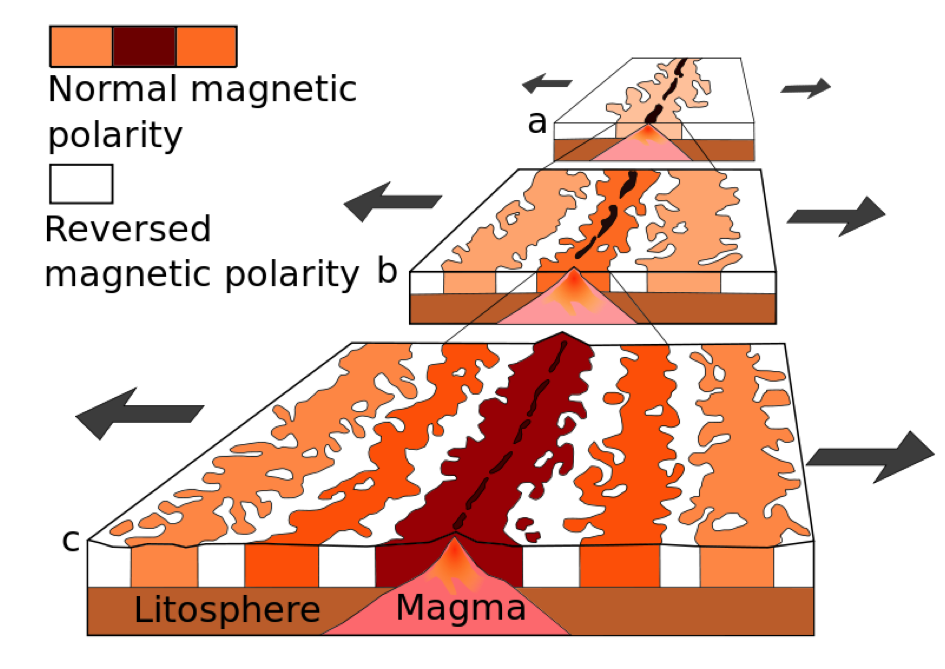How do we know the age of the seafloor?
Scientists can determine the age of the seafloor by examining the changing magnetic field of our planet. Every once in a while, the currents in the liquid core, which create the Earth’s magnetic field, reverse themselves: it is called a geomagnetic reversal. This has happened many times throughout Earth's history.
When scientists studied the magnetic properties of the seafloor, they discovered normal and reversed magnetic stripes with different widths. These magnetic patterns are parallel to the mid-ocean ridges and symmetrical on both sides. As rocks crystallise from lava at the ridges, they literally record the magnetic field of the Earth at the time of their creation.
These stripes of normal and reverse magnetic fields with different sizes can be matched with the geomagnetic reversals records obtained from continental rocks already dated. This is how scientists determine the age of the seafloor.

How to form magnetic striping: new oceanic crust forms continuously at the mid-ocean ridges. While it cools down, it records the magnetic field during its formation. The two parts of the oceanic plate are pulled apart, and magnetic stripes become older as they move away from the mid-ocean ridge. The figure shows the spreading ridge about 5 million years ago (a), about 2 to 3 million years ago (b) and nowadays (c). Courtesy of the U.S Geological Survey.
To confirm the ages obtained with magnetic records, and get an absolute age of the seafloor, scientists use the radioactive dating technique. When the lava solidifies at the ridges to form the new seafloor, radioactive elements coming from the mantle are trapped in it. These elements, like 238U (Uranium) or 40K (Potassium) are unstable, and decay with a very precise rate to become what is called daughter products: 206P (Lead) for Uranium and 40Ar (Argon) for Potassium. By measuring the amount of remaining radioactive elements and daughter products in the seafloor, scientists can determine when the magma crystallized, and thus know the absolute age of the seafloor.